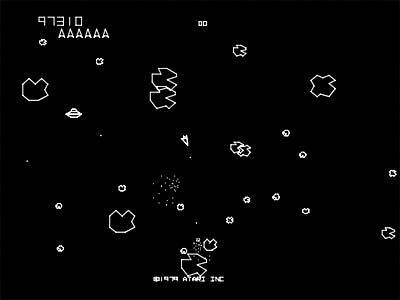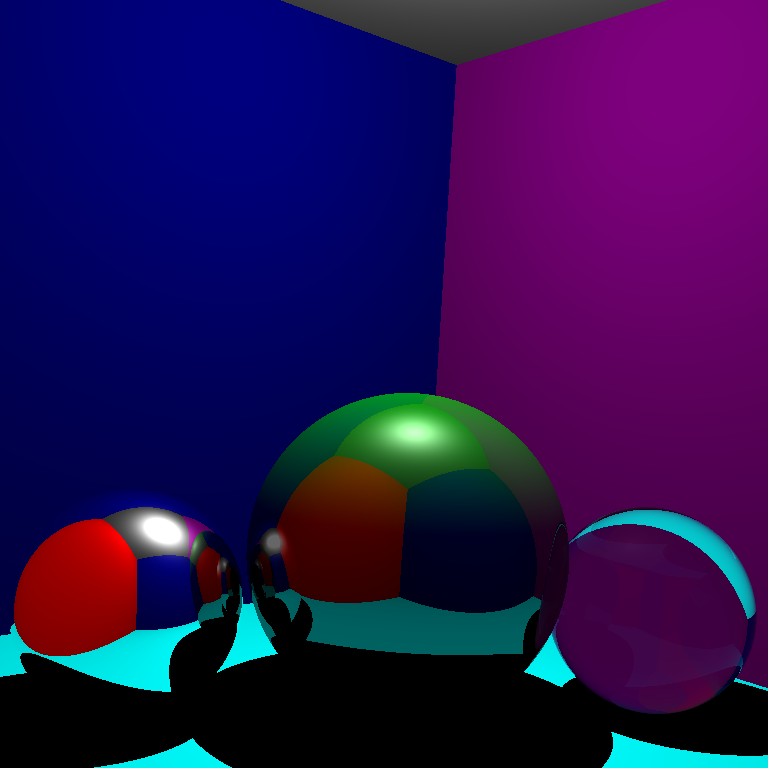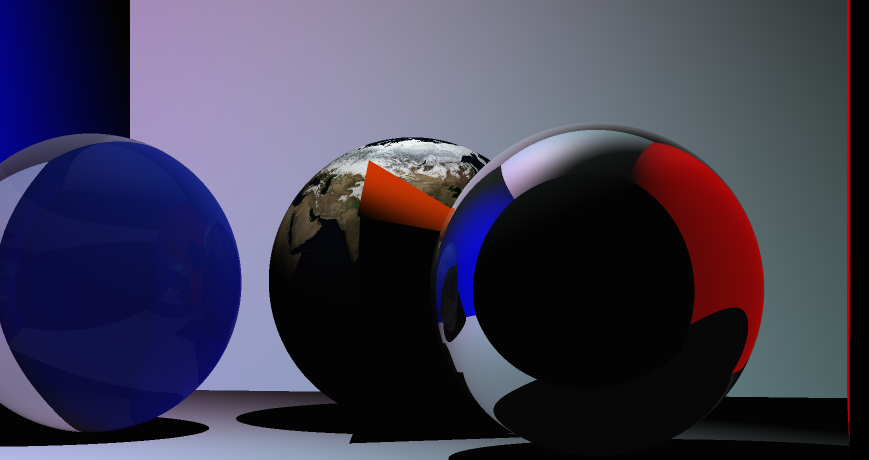A comprehensive introduction to the mathematics and algorithms that drive today's
digital special effects, animation, and games. Designed as a hands-on course,
students will gain experience in building 2D/3D interactive applications using OpenGL.
Topics covered will include geometric transformations, projections, raster algorithms,
3D object models (surface and volume), visible surface algorithms, texture mapping,
lighting/shading, ray tracing, anti-aliasing, and compositing.
Learning Outcomes
Upon completion of the course, successful students will be able to:
- understand the current state-of-the-art in graphics technologies;
- understand the underlying mathematics, algorithms, and data structures that drive movie and game graphics;
- program interactive 2D/3D graphics programs using OpenGL with proper lighting, shading and texture mapping;
- program the graphics pipeline through the use of shaders; and
- program a ray tracing renderer and understand how to extend it to achieve photorealistic global illumination.
- CMPS 1600 or good programming skills (C and C++ are the preferred languages of the course)
- Knowledge of basic data structures like: Linked Lists, Arrays, Trees
- Simple linear algebra: matrix multiplication, vector addition, etc.
- A computer capable of OpenGL 3.1+ development
Instructor
Office Hours
T, 10:00am-11:00am
R, 12:00pm-1:00pm
TA
Charlie Sklare - (general programming assistance)
Book
Required:
- OpenGL Programming Guide: The Official Guide to Learning OpenGL, Version 4.5 (9th Edition)
Other Good Graphics Texts:
- Interactive Computer Graphics: A Top-Down Approach with WebGL, 7th Edition by Angel and Shreiner
- Fundamentals of Computer Graphics (4th Edition) by Shirley, Ashikhmin, and Marschner
- Computer Graphics: Principles and Practice (3rd Edition) by Hughes and van Dam
- Physically Based Rendering, Second Edition: From Theory To Implementation by Pharr and Humphreys
10% Class Participation
30% Programming Assignments (3-4 planned)
20% Midterm Game Project
20% Final Raytracing Project
20% Final Exam
Programming assignments can be submitted up to 1 week beyond a due date with a 20% reduction in grade.
Final grade will be assigned as follows:
A >= 93% [Exemplary. Superior achievement.]
A- >= 90% [Outstanding]
B+ >= 87%, B >= 83%, B- >= 80% [High Pass, Above Average]
C+ >= 77%, C >= 73%, [Pass, Average work, Satisfactory] C- >= 70% [Below Average]
D >= 60%, [Low Pass, Unsatisfactory, Barely passing]
F < 60% [Failure, Unacceptable]
You are required to adhere to the
Code of Academic Conduct. Cheating
will be reported to the Associate Dean of Newcomb-Tulane College. I encourage collaboration, but everyone's work
must be their own. Help and sharing of small code snippets to help someone get past a bug are OK, but whole files
or classes are not. In cases of over sharing, everyone involved will be held equally responsible irregardless of who did the original work.
Sources other than the textbook should be cited appropriately.
Tulane University recognizes the inherent dignity of all individuals and promotes
respect for all people. As One Wave, Tulane is committed to providing an environment
free of all forms of discrimination and sexual harassment, including sexual assault,
domestic and dating violence, and stalking. If you (or someone you know) has
experienced or experiences gender-based violence, know that you are not alone.
Learn more at
onewave.tulane.edu. Any and
all of your communications on these matters will be treated as either “Confidential”
or “Private” as explained in the updated chart below.
| Confidential |
Private |
| Except in extreme circumstances, involving imminent danger to one’s self or others, nothing will be shared without your explicit permission. |
Conversations are kept as confidential as possible, but information is shared with key staff members so the University can offer resources and accommodations and take action if necessary for safety reasons. |
| Counseling and Psychological Services (CAPS) | (504) 314-2277 or The Line (24/7) | (504) 264-6074 |
Case Management and Victim Support Services | (504) 314-2160 or srss@tulane.edu |
| Student Health Center | (504) 865-5255 |
Tulane University Police (TUPD) | Uptown - (504) 865-5911. Downtown – (504) 988-5531 |
| Sexual Aggression Peer Hotline and Education (SAPHE) | (504) 654-9543 |
Title IX Coordinator | (504) 865-5615 or titleix@tulane.edu |


 Anne Nygard 2016
Anne Nygard 2016
 Cody M Licorish 2015
Cody M Licorish 2015